It strongly resembles a hostage release, but with a particularly sophisticated outcome, involving a dozen captives, two enemy states and the transfer, via complex banking circuits, of 6 billion dollars. We are not talking about ransom, since it concerns Iranian money blocked on American orders in banks in South Korea. However, the synchronization of the final “sequencing”, the culmination of eight rounds of negotiations over fourteen months between Iranians and Americans, via Qatari emissaries in Doha, evokes the outcome of a hostage-taking.
Monday morning, finally seeing the end of the tunnel, five American citizens of Iranian origin, detained for years in Iran, were first transported to an airport in Tehran, where a plane from Qatar was waiting for the green light to take off. “We hope to have confirmation today of the payment of all” of the assets released and that “the exchange of prisoners will take place on the same day”, declared the Iranian Ministry of Foreign Affairs at the time. “They are in good health,” a source confided to the Reuters agency almost simultaneously.
The identities of three of them are known: Siamak Namazi, 51, a businessman arrested in 2015 while visiting family; Emad Sharghi, 59, also a businessman, apprehended in 2018 then released conditionally but who was prohibited from leaving the country, then was arrested again when he allegedly tried to flee; and Morad Tahbaz, a 67-year-old environmental specialist, arrested in 2018. All were accused of espionage, which they deny. The identity of the two other ex-captives is not known.
Shortly after, Qatar confirmed that the 6 billion had been transferred from the Swiss central bank to Doha, with a spokesperson for the Iranian central bank specifying that six Iranian accounts in two Qatari banks had been activated to receive 5,573,492,000 euros. Tehran preferred euros to dollars. But we still had to wait several hours for the White House to announce that the former American detainees and two members of their families had taken off from Iran, then to affirm that Joe Biden had a conversion “full of emotion » with the families of ex-prisoners.
As luck would have it, at almost the same time, Iranian President Ebrahim Raissi landed in the United States, where he is participating this week in the United Nations General Assembly.
At the same time, according to a carefully calibrated choreography, we learned, from an Iranian source, that two of the five Iranian prisoners released by the United States in return for this deal had arrived in Doha, where the exchange was going to take place. Each camp was therefore able to announce the recovery of its captives. Reza Sarhangpour and Mehrdad Moin-Ansari return to Iran. As for Amin Hassanzadeh and Kaveh Afrasiabi, they plan to stay in the United States. And the last, Kambiz Attar-Kashani, to go to a third country where his family resides. American justice accused them of having diverted sanctions against Iran.
Faced with opposition from the many adversaries of this “deal” in the United States, at a time when we are marking the first anniversary of the bloody repression against Iranian women who are revealing themselves, the Biden Administration is defending itself by ensuring that it is not a “blank check” to Iran. To make things easier, Washington announced yet another sanctions against the Iranian Ministry of Intelligence and against the former President of the Republic Mahmoud Ahmadinejad, who is largely out of political circles.
The use of these funds can only be for “humanitarian purposes” and will be “under strict supervision”, specified the American National Security Council. To which Tehran responded that it had the possibility of using this envelope differently.
Also read “We became their worst nightmare”: Melika, 17, recounts a year of veil revolt in Iran
In 1986, to recover American hostages in Lebanon, the Reagan Administration went much further by negotiating secret arms sales to Iran, in violation of an arms embargo.
First announced on August 10, this agreement underlines, on both sides, a desire for appeasement, while the nuclear dispute remains deadlocked. The UN also said on Monday that it hoped for a “reduction in tensions”. Taking advantage of the dynamic initiated in Doha, will this exchange of prisoners be followed by other Iranian-American talks with a view to calming persistent tensions over nuclear power, as illustrated by Tehran's latest decision on Saturday not to not renew the mandate of inspectors, French and German, who monitor its atomic installations? These talks have in fact already started in Oman - the other mediator of the Iranian-American crises - but no one knows whether they will be successful.

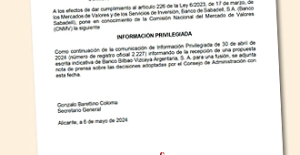 Sabadell rejects the merger with BBVA and will fight to remain alone
Sabadell rejects the merger with BBVA and will fight to remain alone In Germany, the far left wants to cap the price of “doner kebabs”
In Germany, the far left wants to cap the price of “doner kebabs”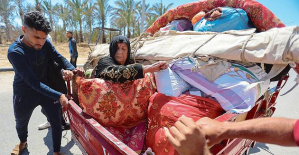 Israel-Hamas war: Gaza between hope of truce and fear of Israeli offensive in the South
Israel-Hamas war: Gaza between hope of truce and fear of Israeli offensive in the South “Mom, Dad, please don’t die”: in the United States, a nine-year-old child saves the lives of his parents injured in a tornado
“Mom, Dad, please don’t die”: in the United States, a nine-year-old child saves the lives of his parents injured in a tornado The presence of blood in the urine, a warning sign of bladder cancer
The presence of blood in the urine, a warning sign of bladder cancer A baby whose mother smoked during pregnancy will age more quickly
A baby whose mother smoked during pregnancy will age more quickly The euro zone economy grows in April at its best pace in almost a year but inflationary pressure increases
The euro zone economy grows in April at its best pace in almost a year but inflationary pressure increases Children born thanks to PMA do not have more cancers than others
Children born thanks to PMA do not have more cancers than others “House of the Dragon”, “Succession”… Max, the new streaming platform from HBO and Discovery, launched in France on June 11
“House of the Dragon”, “Succession”… Max, the new streaming platform from HBO and Discovery, launched in France on June 11 The A13 motorway will finally reopen this Friday, in one direction only
The A13 motorway will finally reopen this Friday, in one direction only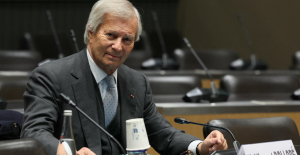 TNT commission of inquiry: tensions between LFI deputies and Macronists before the vote on the report
TNT commission of inquiry: tensions between LFI deputies and Macronists before the vote on the report Apple unveils a new, more efficient iPad range
Apple unveils a new, more efficient iPad range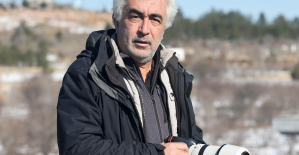 The Gaza War invites itself to the 2024 Pulitzer Prizes
The Gaza War invites itself to the 2024 Pulitzer Prizes Judith Godrèche presents a short film on sexual violence in Cannes
Judith Godrèche presents a short film on sexual violence in Cannes Kevin Spacey: new trial in sight in London for the American actor, for sexual assault
Kevin Spacey: new trial in sight in London for the American actor, for sexual assault Taylor Swift fans make London pub Black Dog their new place of pilgrimage
Taylor Swift fans make London pub Black Dog their new place of pilgrimage Omoda 7, another Chinese car that could be manufactured in Spain
Omoda 7, another Chinese car that could be manufactured in Spain BYD chooses CA Auto Bank as financial partner in Spain
BYD chooses CA Auto Bank as financial partner in Spain Tesla and Baidu sign key agreement to boost development of autonomous driving
Tesla and Baidu sign key agreement to boost development of autonomous driving Skoda Kodiaq 2024: a 'beast' plug-in hybrid SUV
Skoda Kodiaq 2024: a 'beast' plug-in hybrid SUV The home mortgage firm rises 3.8% in February and the average interest moderates to 3.33%
The home mortgage firm rises 3.8% in February and the average interest moderates to 3.33% This is how housing prices have changed in Spain in the last decade
This is how housing prices have changed in Spain in the last decade The home mortgage firm drops 10% in January and interest soars to 3.46%
The home mortgage firm drops 10% in January and interest soars to 3.46% The jewel of the Rocío de Nagüeles urbanization: a dream villa in Marbella
The jewel of the Rocío de Nagüeles urbanization: a dream villa in Marbella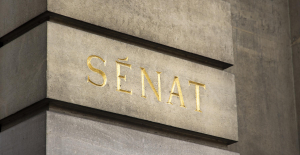 Institutions: senators want to restore the accumulation of mandates and put an end to the automatic presence of ex-presidents on the Constitutional Council
Institutions: senators want to restore the accumulation of mandates and put an end to the automatic presence of ex-presidents on the Constitutional Council Europeans: David Lisnard expresses his “essential and vital” support for François-Xavier Bellamy
Europeans: David Lisnard expresses his “essential and vital” support for François-Xavier Bellamy Facing Jordan Bardella, the popularity match turns to Gabriel Attal’s advantage
Facing Jordan Bardella, the popularity match turns to Gabriel Attal’s advantage Europeans: a senior official on the National Rally list
Europeans: a senior official on the National Rally list These French cities that will boycott the World Cup in Qatar
These French cities that will boycott the World Cup in Qatar “The future is for us”: “disappointed” and “proud” at the same time, Al-Khelaïfi sees the glass half full after the elimination of PSG
“The future is for us”: “disappointed” and “proud” at the same time, Al-Khelaïfi sees the glass half full after the elimination of PSG PSG: “Since January, these have not been my best matches,” agrees Zaire-Emery, who promises to “come back stronger”
PSG: “Since January, these have not been my best matches,” agrees Zaire-Emery, who promises to “come back stronger”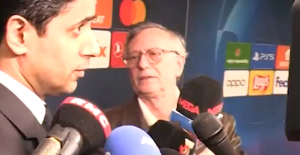 “What is this question, honestly?” : Nasser Al-Khelaïfi (very) annoyed after PSG-Dortmund
“What is this question, honestly?” : Nasser Al-Khelaïfi (very) annoyed after PSG-Dortmund “I am the guy who has to score the goals”: Mbappé does not hide and assumes responsibility after PSG’s exit
“I am the guy who has to score the goals”: Mbappé does not hide and assumes responsibility after PSG’s exit


















